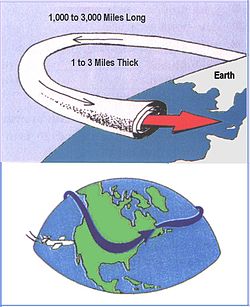AY Honors/Weather/Answer Key
1. Explain how each of the following is formed:
a. Fog
Relative humidity is a measure of how much water is in the air compared to how much water can be in the air. As the temperature rises, the air can hold more water, and as it drops, it can hold less. When the humidity is 100% and the temperature drops, the air can no longer hold all the water that is in it. Fog is moisture that gets squeezed out of the air when the temperature drops.
b. Rain
c. Dew
d. Snow
e. Sleet
f. Hail
g. Frost
2. Identify either in the sky or from pictures the following types of clouds: cirrus, cumulus, stratus, nimbus. What kind of weather is associated with each.
3. Explain the action of a mercury or spirit thermometer, a mercury barometer, an aneroid barometer, and a rain gauge.
4. Why is it possible to be rainy on one side of the mountain range and dry on the other? Give an illustration for your country or region.
a. Why is it cooler and more moist in the mountains than in the lowlands?
b. From which direction do rain and clear weather usually come in your locality?
5. Show with the help of a diagram how the earth's relationship to the sun produces the seasons.
6. What causes lightning and thunder? What different kinds of lightning are there?
7. Show with the help of a diagram what a convection is. What is its relation to winds?
8. Explain how radar, satellites, and computers are used in weather forecasting.
9. Tell how the following can affect our weather:
a. Jet stream
Jet streams are fast flowing, relatively narrow air currents found in the atmosphere at around 11 kilometres (36,000 ft) above the surface of the Earth. They form at the boundaries of adjacent air masses with significant differences in temperature, such as of the polar region and the warmer air to the south. For this reason, areas between the pole and the jet stream are cold, and area between the equator and the jet stream are warm. As the jet stream shifts along the north-south direction, the weather shifts as well.
Meteorologists now understand that the path of the jet stream steers cyclonic storm systems at lower levels in the atmosphere, and so knowledge of their course has become an important part of weather forecasting. Jet streams also play an important part in the creation of super cells, the storm systems which create tornados.
b. Volcano eruption
When a volcano erupts, it sends incredible amounts of volcanic ash into the atmosphere. This is enough to decrease the amount of sunlight that reaches the earth, causing a temporary (though sometimes devastating) global cooling. It also affects the intensity of the colors in the sunset for years.
10. Make a drawing showing the water cycle in weather.
The water cycle is the continuous movement of water over, above, and beneath the Earth's surface. It is powered by solar energy, and because it is a cycle, there is no beginning or end. As water moves around in the hydrosphere, it changes state among liquid, vapour, and ice. The time taken for water to move from one place to another varies from seconds to thousands of years, and the amount of water stored in different parts of the hydrosphere ranges up to 1.37 billion km³, which is contained in the oceans. Despite continual movement within the hydrosphere, the total amount of water at any one time remains essentially constant.


